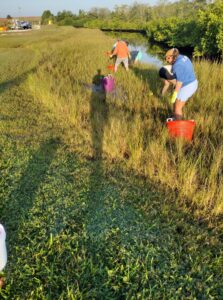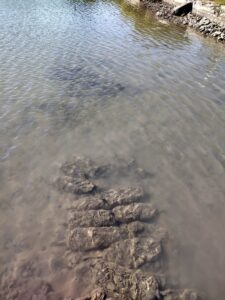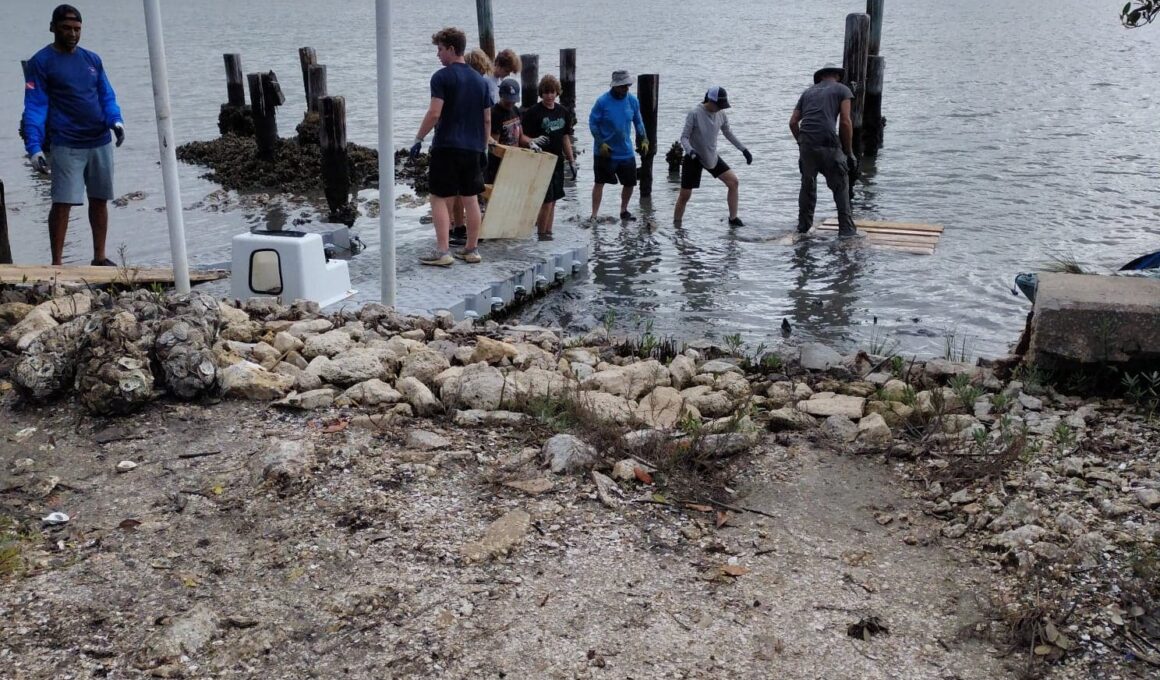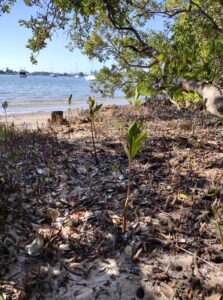
What started as a mostly underwater 50-acre site complete with falling-down homes and derelict boats has become a destination campus for marine biologists, environmental students and citizen scientists from across the region.
St. Petersburg College’s Bay Pines STEM Center encompasses a mosaic of habitats from a deep lagoon to a high-and-dry peninsula that hosts a growing population of gopher tortoises. Next door, in a cell phone tower, a pair of mated eagles returns to their nest every year.
“Except for some homes associated with the VA hospital, there really hasn’t been any building here,” says Erica Moulton, SPC’s STEM director. “Most of the 50 acres is actually lagoon surrounded by a dredged-and-filled finger of land that juts out and creates a ‘hurricane hole’ where people could leave their boats during storms.”
The campus also includes a series of living shorelines, including an unusual drop from the 17-foot-high peninsula with pines, palms and cactus to a more predictable ring of mangroves that includes all three species- red, black, and white mangroves- found in Tampa Bay. It also features a saltern, a hypersaline area that’s one of the rarest habitats in the region.
“This is a unique opportunity for students to look at everything from seagrasses to gopher tortoises and to really learn about Florida habitats in one place,” Moulton said. “We’ve seen everything from manatees and sea turtles to dolphins and sharks in the lagoon. We’re not too far from the Intercoastal Waterway and then we’re just one bridge away from the Gulf of Mexico, so it’s a totally unique college campus.”
And while working outside to study habitats and the critters that live in them is an important part of the curriculum, students at the STEM Center also benefit from outstanding classroom and lab facilities as well as professors focused on students, not research, Moulton said.
“This campus offers our students a really unique opportunity to engage with a faculty member here on campus, or as part of a community partnership with someone at USGS (U.S. Geological Survey), NOAA (National Oceanic and Atmospheric Administration) or FWC (Florida Fish and Wildlife Conservation Commission),” she said. “A student can be here and learn all the same things they would have learned at a major university, except they’re directly on the water and that doesn’t happen in many places.”
Another benefit for SPC students: Because there are no graduate students, they have easier access to lab space and research facilities. “You don’t have to wait 12 days to use a microscope or access lab equipment that might be out in the field because the research department is on a field expedition or on a ship.”

And, as a four-year college, the faculty is focused on teaching rather than research, although most continue to conduct research they’re interested in. “They’ve done some really amazing things here, like looking at habitat for the larval and juvenile stages of stone crabs and how they utilize lagoon areas, and we’ve also partnered with a couple of other scientists to study seagrasses in the lagoon and how they respond to cleaner water.”
Lab facilities with stations assigned to individual students help build collaborations and synergies that might not happen in a larger school. “Sometimes you can almost smell the thinking in here,” Moulton said. “This is not like they’re coming in and repeating someone else’s research, or having to document things for another scientist. So you might have someone who is working on a microbiology project and someone who’s working on macrofauna, and they’re working together. It ended up that the microbiology student who was never really interested in tortoises wondered whether anyone had looked at the microbiology and microbiome of what’s happening in gopher tortoise burrow entrances.”
They ended up doing a comprehensive literature review that turned into a totally new research project looking at a topic that hadn’t been covered before. “This whole working lab is usually an experience most people don’t get as undergrads in big universities,” Moulton said.
Along with opportunities for students, the STEM Center also includes a large community room overlooking the lagoon that’s available for groups or private events, Moulton said. “We’re really working to make it a place where for hands-on learning from SPC students to high school students, and for other groups who want to take advantage of this unique location.”


